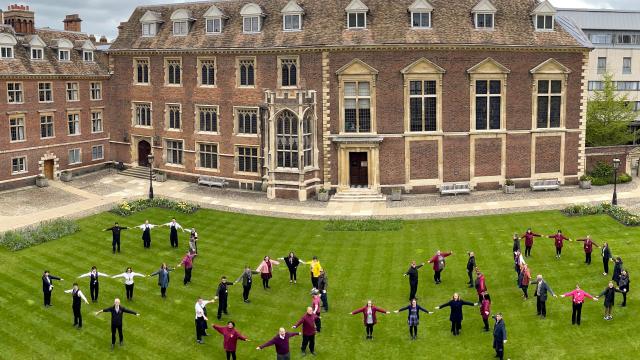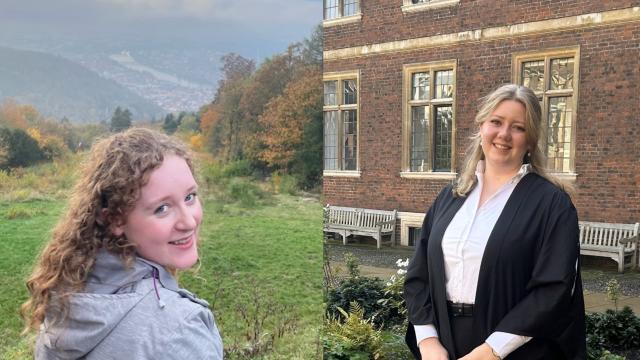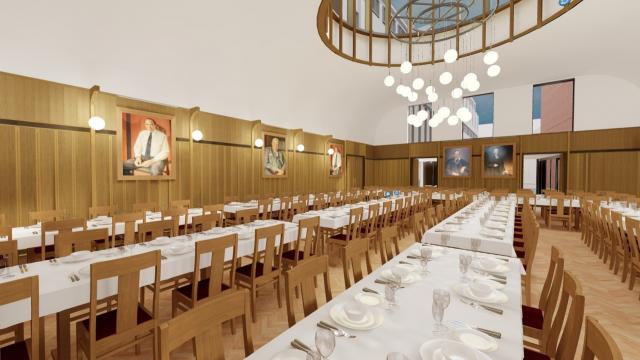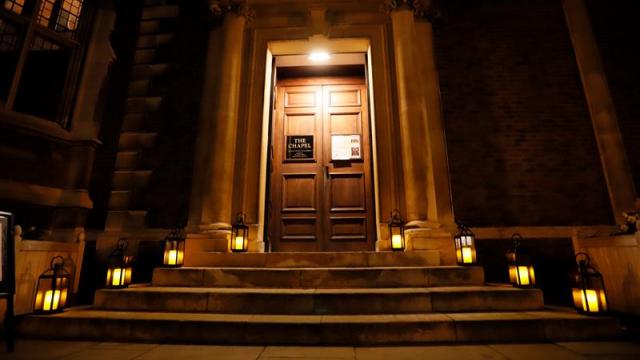
A Fellow of St Catharine’s has spent her sabbatical during Easter term and the summer vacation visiting Holocaust heritage sites as part of her work seeking to safeguard these sites for future generations. Dr Gilly Carr (2006) is Director of Studies in Archaeology at St Catharine’s and was visiting these sites in her capacity as chair of the International Holocaust Remembrance Alliance’s Safeguarding Sites project, which is developing an international heritage charter to safeguard sites of the Holocaust and genocide of the Roma, as well as other sites of the Nazis and their collaborators. We caught up with Dr Carr to find out more about how the sites that she has visited are informing the Safeguarding Sites project and her activities later this year.
What is the purpose of the Safeguarding Sites project?
“Along with an international team of 15 people, all experts and national delegates of the International Holocaust Remembrance Alliance (IHRA), we work to ‘safeguard the record’, in the IHRA’s parlance, which is one of this international organisation’s long-term stated goals. This Safeguarding Sites project, is the IHRA’s current flagship project, which I am proud to chair. This means that, over the last five years, I have worked across Europe with my team, gaining a wide expertise about a range of Holocaust heritage, the risks, challenges and problems it faces as a category of heritage, as well as identifying safeguarding responsibilities, principles, practices.
“Rather than being depressed by the work I do, I am greatly energised and motivated by it in the knowledge that I am making a positive difference and helping to safeguard these places for the future. We know that the survivors won’t be with us for much longer, and so attention will gravitate even more towards these historic sites of genocide and war crimes.”
What Holocaust heritage sites did you visit this summer? And what condition were they in?
“Sites of the Holocaust across Europe are under threat. The Dresden Barracks, a part of the ghetto of Terezin in Czechia, into which Jews were packed during the war, is collapsing quickly because of storms, floods and climate change. The mass grave of Jajinci in Belgrade, which holds the bodies of around 80,000 Jews, Roma and Serbs mostly from the camps of Staro Sajmište and Topovske Šupe, has problems with a lack of respectful behaviour at the site. A camp building from Staro Sajmište in Belgrade has, in the last couple of weeks, been bulldozed to make way for a road; it lies outside the memorial site and is not protected. There is some evidence for potential mass graves nearby. The former camp of Jasenovac in Croatia, often instrumentalised in the past just as much as camps in Serbia, has a problematic museum display and a silent memorial landscape which is very difficult to understand, especially for international visitors. These are just some of the Holocaust sites I have been visiting on fieldwork and advising on since my sabbatical began at the start of the Easter term.”
|
|
|
How is archaeological expertise helping to respond to these sorts of challenges?
“Archaeological research is discovering more information all the time, and I am involved in this work as a conflict archaeologist as well as a Holocaust heritage expert. Later this year I will be continuing an excavation with my colleague, Professor Claudia Theune (University of Vienna) at Ravenbrück Memorial. I have also spent a little time during my sabbatical as Visiting Professor at the University of West Bohemia in Czechia as the guest of my colleague Dr Pavel Vařeka, who works at the cutting edge of conflict archaeology, excavating sites of communism and the Cold War as well as sub-camps, POW camps, and, most recently, in Lety, the site of a Roma concentration camp. Some have denied that this camp ever existed, but archaeology has the power to disprove such falsification and denial of the past. I was extremely lucky to visit the ongoing excavation in April and June and see some of the finds. The excavation will finish very soon to make way for a new memorial project.
“The work of archaeologists and heritage experts can go hand in hand when it comes to Holocaust heritage, and I have found that it is of benefit to work in both fields. The IHRA’s draft international charter takes into account the fact that many sites exist now only beneath the soil. It also stipulates the importance of trained experts exhuming mass graves rather than, say, members of the public or the armed forces.
“Just last month, when helping to advise, as an IHRA expert and chair of the Safeguarding Sites project, about the destruction of a building at the former camp of Staro Sajmište, I knew that the potential for mass graves in the area meant that archaeologists should be on site to monitor the destruction. If bodies are found, work must be stopped and a rabbi brought in to decide on the interpretation of Halacha (Jewish law). This will dictate whether any bodies should be moved or not. Whether archaeologists will be allowed on site still remains to be seen as the existence of mass graves nearby is not commonly accepted.”
What coming up next term?
“The IHRA will meet in Zagreb in November, when it is due to adopt the finished charter, likely to be named The IHRA Charter for Safeguarding Sites. After this official adoption, each of the 35 member states decide whether they will adopt it too. This process tends to happen gradually in the months and sometimes years that follow. There will then be much work to disseminate the charter in 2024, making sure that the appropriate international heritage organisations see it as well. The IHRA is partnering with the EU for a new European project on networks of sites of the Holocaust, and I am advising on this.
“Closer to home, I am part of the team of 11 independent, experienced and internationally-recognised experts appointed by Lord Eric Pickles, the UK’s Post Holocaust Issues Envoy and Head of UK Delegation to the IHRA, to review evidence of the number of prisoners who died on the Channel Island of Alderney during the Nazi occupation. To understand the most accurate number of people who died under the occupation, we will be building on pre-existing knowledge by examining files from archives across Europe and new submissions in response to the Government’s recent request for evidence. The plan is to publish our report in March 2024.”
“In addition, this autumn my part-time, open access, online Diploma course on Conflict Archaeology and Dark Heritage will begin, and I look forward to bringing new case studies and ideas to train the next generation of students from across the world in this important field.”







